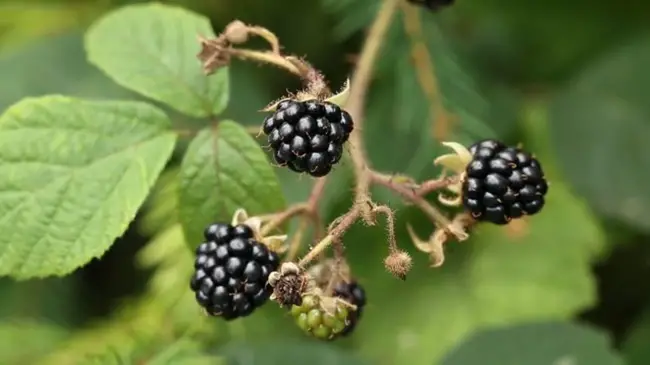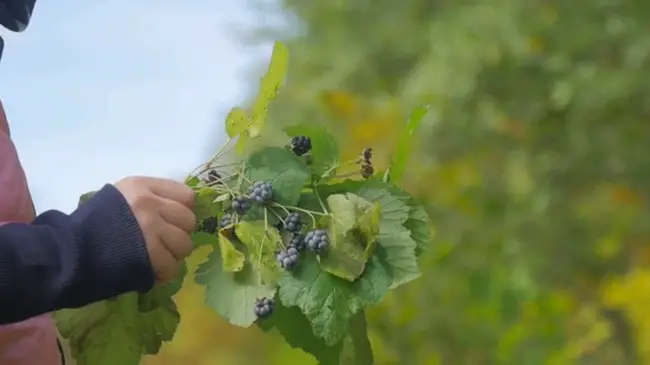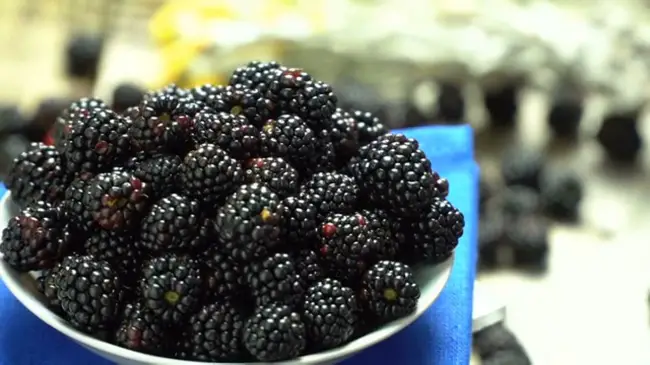In Europe, there are 300 wild species of growing blackberries. In the Middle Ages, blackberries were allowed to grow freely in the churchyards, thought to keep the ghosts of the deceased in their coffins.
As far as the birds and bees are concerned, plants do not come much better than this humble bramble from the blackberry bush. Even small animals enjoy the tasty fruit. Irresistible brambles are quick to produce which is one reason people love them.
Cultivation
The suckers are sent up from the roots of the bushy vines from where the stems touch the ground. With this growth habit and their thorny stems, the berries make a great privacy fence. Remember to plant the berries and ensure they have enough room to wander.
Although certain varieties can be trained up a trellis, the semi-erect variety Brazos grows with some stems sprawling and some upright.
The best starts for plants are typically begged from neighbors already growing berry plants. After you receive permission to dig up some plants or rooted shoots in a garden site to have the tasty berry growing forever.
Three or four plants can provide the average family with plenty of berries to satisfy their needs. Blackberry root cuttings planted in winter will be fruiting about 16 months later. Some fruit may be produced the first fall after dormant season planting.
Recommended varieties include Olallie, which produces large, sweet berries grown on thorny, trailing canes. The erect freestanding Shawnee is known for its excellent quality and yield.
- The berries can adapt to many different kinds of soils.
- Blackberries prefer well-drained, sandy loam, and slightly acidic soils.
- Raised beds work well where drainage is poor.
- The ideal pH level to plant blackberries is within the range of 5.5 – 6.5.
- Set plants three feet apart in a row.
- Care and Feeding
You need to feed new plantings every 8 – 10 weeks. During the dry season, you should water your bushes one or two times a week.
During February through September, you should fertilize the soil with 3 ounces of 6-6-6 or 8-8-8. Mature blackberry bushes should be given 5 ounces for each plant in February, June, and late August.
Give the plants a thick mulch to conserve moisture and control weeds. Weed control is important because growing blackberries are very shallow-rooted.
Herbicides are difficult to use because of the suckering nature of the plant. Mulching helps keep weeds controlled without causing damage to the new shoots.
Trim Blackberry Bushes
Growing blackberry can be divided into two groups of upright varieties requiring no support and trailing types who require a trellis of sorts to control their growth and support the load of fruit.
Growing blackberry plants are one of the easiest fruits to grow if you are having a good pruning for the plant’s growth restriction. If you leave the blackberry plants grow themselves without much attention, they tend to grow rampant. With proper pruning, plants can be kept within manageable boundaries.
Every other row should be shredded to the ground as soon as the berries are harvested. These rows will produce a small crop of growing blackberries the following season. The unpruned rows will produce a large harvest and be shredded next year.
Harvesting Blackberry
Growing Blackberries should be harvested when fully ripe. It is extremely easy to fill a pot with plump berries from a backyard planting. Many of the productive varieties will produce as much as one gallon of fruit per foot of row.
Pick the juicy fruit when the color changes from red to purple and the berry is slightly soft. In the southern regions, harvesting begins in early spring.
At first, only a few of the blackberries will ripen, but soon picking will become an every other day affair for about thirty days.
Pest Control
After harvesting, it is best for you to cut all the plants back to the ground right away. By doing so, it can help to remove many potential disease and insect problems along with old non-productive canes. If diseases including leaf spot and anthracnose threaten the plants, check into organic controls for your area.
Although blackberry bushes are not immune to pests, most gardeners find the plants escape major infestations. If insects such as thrips, mites, stink bugs, and beetles pose a threat, look for pesticides specifically labeled for use on blackberries.
Uses
The fruit you are most likely to have an overabundance of in your garden by fall is blackberries. After you and the entire neighborhood have had your fill of blackberry crumble, the jam is also incredibly simple to make.
If you plan to make preserves or jellies, a few red berries help make the fruit jell. In addition, a delicious cordial will last for a long time if it is kept in a cool dark place. The tonic is made with growing blackberries, white wine vinegar, sugar, and honey.
Growing Blackberries for Wine
If you are thinking of growing blackberries for Wine, then there are some things that you should take into account in order to make this undertaking successful.
Blackberry is the kind of plant that is possible to grow as either in bushes or in vines. The spread and height of this large plant can reach up to ten feet.
The best place to grow blackberries is where there’s not much traffic to prevent people from getting scratched by sharp thorns.
While they grow and bloom well under the sun, they can still grow in sites with partial sun.
Trimming is important with blackberry bushes since the taller ones have a tendency to produce more long thorns than fruits.
Even so, picking the berries would require you to wear a long-sleeved shirt if you do not want to get scratched by the thorns during the activity.
Once the picking process is done, it is best to trim the bushes at least 20 inches above the soil.
Making Wine has become quite popular for homeowners and gardeners alike, especially for those who like to make hand-crafted wines made out of blackberries.
The blackberry is one of the many fruits that create wonderful wines. These fruit wines taste very much alike to the traditional grape wines.
Before growing blackberries for wine on your property, check the soil where they are to be planted. The soil should healthy and well-drained. However, so as not to let the blackberry bushes suffer, the soil needs to maintain its moisture.
In this case, the bushes need to be watered consistently on a regular basis. The best way to plant the berries would be in a row.
If it’s a blackberry vine you are growing, put a stake or pole behind the vine to act as the structural support to the plants. When the vine gets older and taller, it will just naturally grow and crawl along the pole.
Regardless if you are growing bushes or vines, the growth of your blackberries should be regularly monitored and checked considering that these berries tend to overspread and overgrow.
Blackberries are generally not disturbed by pests, so there is actually no need of spraying them with insecticides. Growing blackberries for wine will guarantee you they will produce strong, dark, and delicious wines in the long run. Wines that are Made From Blackberries that have been cultivated a healthy way.
You may refer to this video for the complete guide to grow blackberries.




